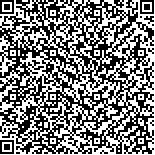张鑫,禄熠行,刘新禹,等.重复经颅磁刺激靶向作用M1区不同部位或磁刺激坐骨神经治疗脊髓损伤后运动障碍的疗效对比观察[J].中华物理医学与康复杂志,2025,47(8):710-714
扫码阅读全文

|
| 重复经颅磁刺激靶向作用M1区不同部位或磁刺激坐骨神经治疗脊髓损伤后运动障碍的疗效对比观察 |
|
| |
| DOI:10.3760/cma.j.cn421666-20250111-00030 |
| 中文关键词: 重复经颅磁刺激 脊髓损伤 运动障碍 |
| 英文关键词: Transcranial magnetic stimulation Spinal cord injury Motor dysfunction |
| 基金项目:国家自然科学基金项目(82272591, 82472593) |
|
| 摘要点击次数: 814 |
| 全文下载次数: 693 |
| 中文摘要: |
| 目的 对比观察重复经颅磁刺激(rTMS)靶向作用大脑M1手区、下肢区或磁刺激坐骨神经对脊髓损伤(SCI)患者运动功能及日常生活能力的改善作用。 方法 回顾性分析2018年1月至2024年4月期间在空军军医大学第一附属医院康复医学科住院治疗的SCI患者相关资料。根据纳排标准共纳入86例患者,根据磁刺激干预部位不同,将其分为M1手区组(22例)、M1下肢区组(20例)、坐骨神经组(24例)及对照组(20例)。4组患者均接受常规药物治疗及康复训练, 在此基础上M1手区组、M1下肢区组、坐骨神经组分别采用10 Hz磁刺激靶向作用左侧M1手区、M1下肢区或双侧坐骨神经出口处,对照组未给予rTMS或磁刺激治疗。于治疗前、治疗4周后分别采用脊髓独立性量表(SCIM)、SCIM室内活动评分(SCIM12)、改良Barthel指数量表(MBI)及下肢运动量表(LEMS)对4组患者进行疗效评定。 结果 治疗后4组患者SCIM、SCIM12、MBI及LEMS评分均较治疗前明显改善(P<0.05),治疗后M1手区组SCIM评分改善值[10.00(4.00,24.75)分]明显优于对照组水平[3.50(0.00,9.50)分,P<0.05],M1手区组MBI评分改善值[12.00(6.75,31.50)分]明显优于对照组水平[7.50(1.25,17.75)分,P<0.05],M1手区组LEMS评分改善值[2.00(0.00,10.00)分]明显优于坐骨神经组[0.00(0.00,2.00)分,P<0.05]及对照组水平[0.00 (0.00, 1.75),P<0.05]。 结论 采用高频rTMS刺激M1手区可显著促进SCI患者下肢运动功能恢复,提高生活自理能力,其疗效优于靶向刺激M1下肢区或坐骨神经。 |
| 英文摘要: |
| Objective To compare the effect of repeated transcranial magnetic stimulation (rTMS) targeting the M1 hand area, the M1 lower limb area, or the sciatic nerve on the motor functioning and ability in the activities of daily living of persons after a spinal cord injury (SCI). Methods This was a retrospective analysis of data describing 86 hospitalized SCI patients. They were divided into four groups based on where the rTMS was applied: an M1 hand area group (n=22), an M1 lower limb area group (n=20), a sciatic nerve group (n=24), and a control group (n=20) who never received rTMS. In addition to conventional medication and rehabilitation training, the M1 hand area group, the M1 lower limb area group and the sciatic nerve group received 10Hz rTMS over the named area for 4 weeks. Before and after the treatment, the Spinal Cord Independence Measure (SCIM) total scores, SCIM indoor activity (SCIM12) sub-scores, Modified Barthel Index (MBI) scores, and lower extremity motor (LEMS) scores were compared among the four groups. Results After the treatment, the average SCIM, SCIM12, MBI, and LEMS scores had improved significantly in all four groups. The average SCIM [10.00(4.00, 24.75] and MBI scores [12.00(6.75,31.50)] of the M1 hand area group were then significantly better than the control group′s averages [3.50(0.00, 9.50) and 7.50(1.25,17.75)]. There was also significantly greater improvement in the average LEMS score of the M1 hand area group [2.00(0.00, 10.00)] compared with both the sciatic nerve group [0.00(0.00,2.00)] and the control group [0.00(0.00, 1.75)]. Conclusions High-frequency rTMS stimulation of the M1 hand area significantly promotes the recovery of lower limb motor function and self-care ability after an SCI. It is more effective than stimulating the M1 lower limb area or the sciatic nerve. |
|
查看全文
查看/发表评论 下载PDF阅读器 |
| 关闭 |
|
|
|